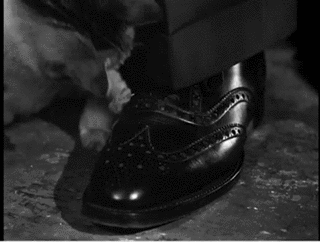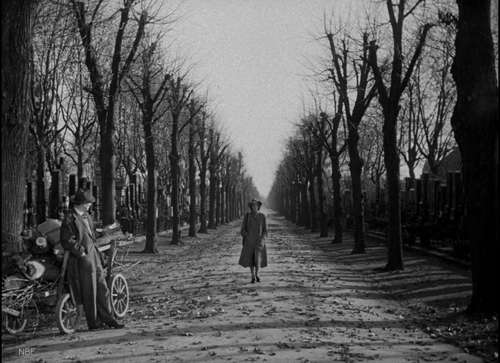
From the Chicago Reader (March 30, 1990). I must confess that I was disappointed for a long time that none of Campion’s subsequent films lived up to the promise of Sweetie, in spite of the virtues of some of them, at least until her wonderful 2014 miniseries Top of the Lake, which I’ve just belatedly caught up with. (I’ll never forget a bitter comment Jean-Luc Godard made to me in Toronto in 1996, citing Campion as a perfect example of a talented filmmaker “completely destroyed by money”.) But then again, to cite someone cross-referenced in this review (and also significantly cross-referenced in Top of the Lake, a kind of feminist response to Blue Velvet and Twin Peaks), it’s also hard to think of many David Lynch films that have lived up to the promise of Eraserhead, at least prior to Inland Empire….I suspect that the collaboration of writer Gerard Lee on Passionless Moments, Sweetie, and Top of the Lake has something to do with what makes all three of them stand out so vividly in Campion’s oeuvre.– J.R.

SWEETIE
**** (Masterpiece)
Directed by Jane Campion
Written by Gerard Lee and Campion
With Genevieve Lemon, Karen Colston, Tom Lycos, Dorothy Barry, Jon Darling, Michael Lake, and Andre Pataczek. Read more
From the Chicago Reader (March 4, 1994). — J.R.
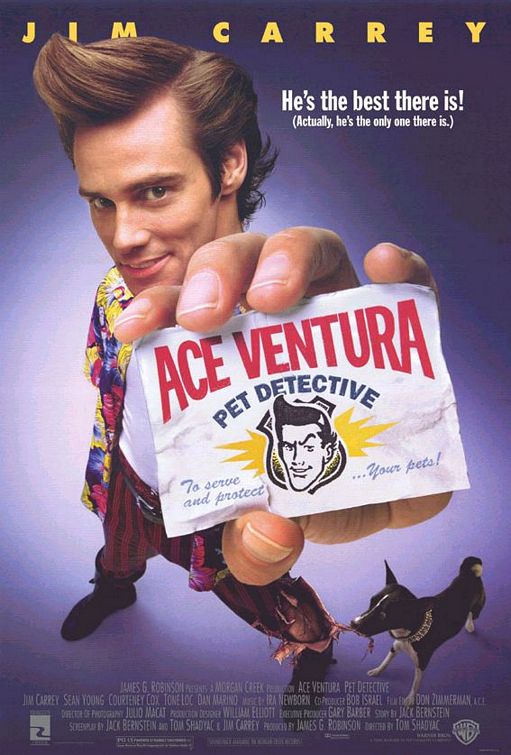
* ACE VENTURA: PET DETECTIVE
(Has redeeming facet)
Directed by Tom Shadyac
Written by Jack Bernstein, Jim Carrey, and Shadyac
With Carrey, Sean Young, Courteney Cox, Tone Loc, and Dan Marino.

Why go back to a movie that affected me the first time like a piece of chalk squeaking across a blackboard? Well, for one thing, neither I nor any other reviewer I know of came anywhere close to predicting that Ace Ventura: Pet Detective would not only find an audience but sail to the top of the box-office charts. How did we all miss the boat? “An appallingly bad movie, a certain candidate for worst of the year,” begins Gene Siskel’s capsule review in the Tribune; it concludes, “Don’t ask how this was financed.” These were my sentiments exactly at the press screening — a sort of stupefied horror at the manic leers and terminally stupid gags of star and cowriter Jim Carrey, coupled with disbelief that anyone could possibly go for them. But when the movie opened it soon became clear that at least some financiers knew exactly what they were doing. What did they understand that the rest of us grown-ups missed out on? Read more
From the August 8, 2003 issue of the Chicago Reader. — J.R.
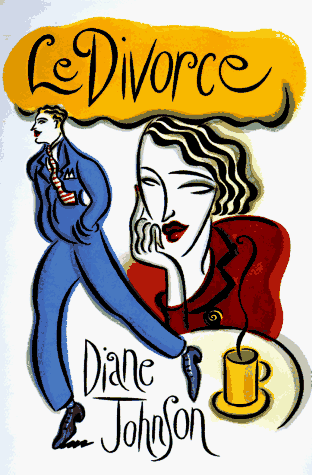
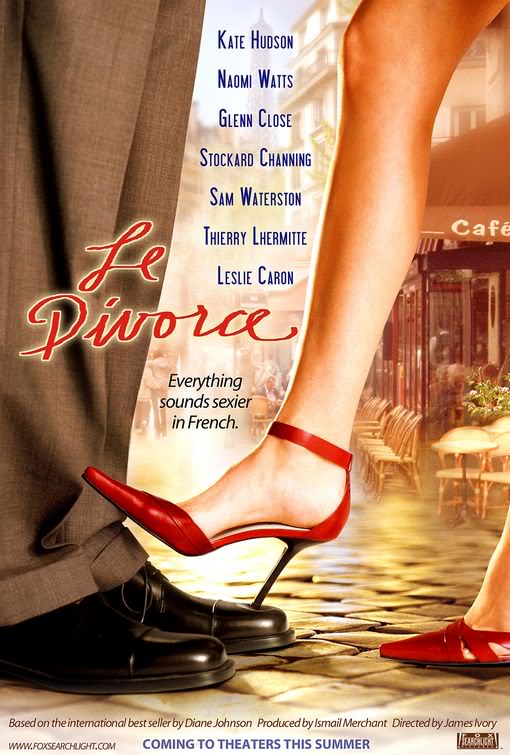
Le Divorce
*** (A must-see)
Directed by James Ivory
Written by Ruth Prawer Jhabvala and Ivory
With Kate Hudson, Naomi Watts, Thierry Lhermitte, Leslie Caron, Melvil Poupaud, Glenn Close, Stockard Channing, Sam Waterston, Matthew Modine, Jean-Marc Barr, Nathalie Richard, Bebe Neuwirth, and Stephen Fry.

Producer Ismail Merchant, director James Ivory, and their regular screenwriter-adapter Ruth Prawer Jhabvala seem to have a special affinity for Americans in Paris, the subject of three of their five most recent films — Jefferson in Paris (1995), A Soldier’s Daughter Never Cries (1998), and now Le Divorce. The first of these is one of their worst features, while the second and third are among their best. So their special affinity doesn’t seem to matter as much as the quality of their material and their particular feeling for it. In the case of Le Divorce, their fidelity to the civilized attitudes of Diane Johnson’s novel makes this one of their most sophisticated and entertaining features to date.
The novel is narrated by Isabel, a 19-year-old film-school dropout from Santa Barbara who’s gone to Paris to visit her older stepsister Roxy, a poet married to a French painter and pregnant with their second child. Read more
From the Chicago Reader, June 20, 2003. The posthumous Schuller-conducted premiere of Epitaph, incidentally, alluded to below, is now available on DVD, and is warmly recommended. — J.R.

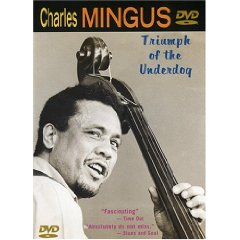
Charles Mingus: Triumph of the Underdog
*** (A must-see)
Directed by Don McGlynn.
The sheer impossibility of encompassing jazz bassist, composer, and bandleader Charles Mingus (1922-’79) in a single film limits Don McGlynn’s ambitious 1997 documentary, Charles Mingus: Triumph of the Underdog, from the outset. Which doesn’t mean you shouldn’t see it — it’s playing at the Gene Siskel Film Center, and Mingus’s second wife, Celia Mingus Zaentz, will lead a discussion after the June 27 screening — but if you don’t already know something about the man’s music this may not be the ideal place to start. I’d recommend instead one of his best early albums — The Clown, Tijuana Moods, East Coasting, Mingus Dynasty, Charles Mingus Presents Charles Mingus (the best one with Eric Dolphy), or Mingus at Monterey.
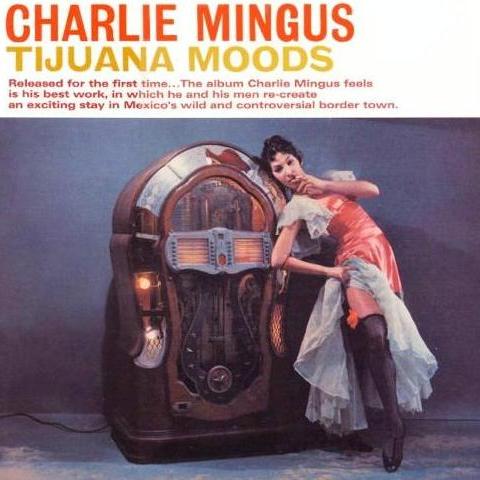
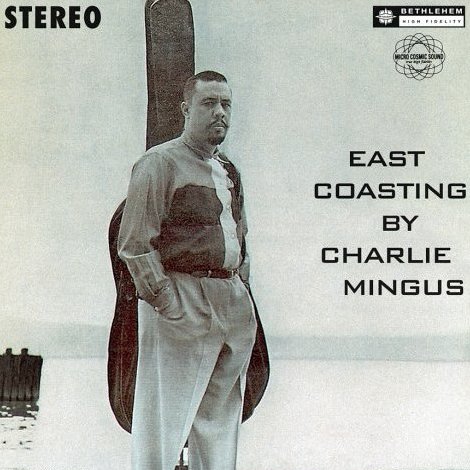
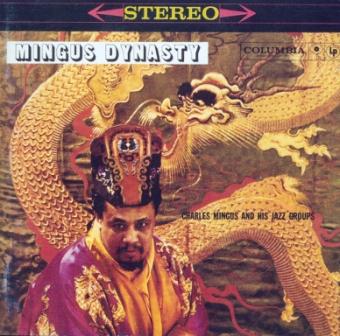

No single book has succeeded in doing full justice to Mingus either. Maybe it’s because he had a genius for straddling musical categories such as traditional, modern, avant-garde, jazz, and classical (as Gunther Schuller points out in one of this film’s interviews, Mingus studied Arnold Schoenberg’s music in his teens, during the 30s, when few people here were familiar with it). Read more
From the July 30, 1999 issue of the Chicago Reader. This is also reprinted in my book Discovering Orson Welles. In retrospect, I clearly should have given this movie four stars. — J.R.
The Third Man
Rating *** A must see
Directed by Carol Reed
Written by Graham Greene
With Joseph Cotten, Alida Valli, Orson Welles, Trevor Howard, Bernard Lee, Wilfrid Hyde-White, Ernst Deutsch, Siegfried Breuer, and Erich Ponto.
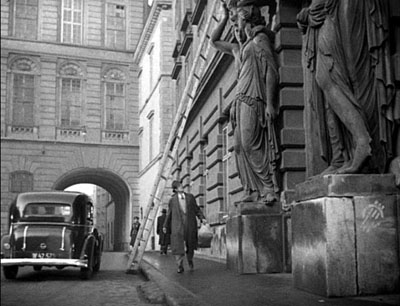
Ironically, the most successful and beloved movie Orson Welles was ever associated with — and the one that may have had the most significant effect on the remainder of his career — has not been one of his own. Admittedly, Citizen Kane has more prestige, but that’s a relatively recent development; for the first quarter of a century after it was made, it was criticized as “uncinematic” in the few standard works of film history available, such as The Liveliest Art and The Film Till Now. Instead it was The Third Man (1950) that was most often cited with pleasure when Welles’s name came up. “Didn’t he direct that?” was something I used to hear a lot. Today I hear “Didn’t he direct at least some of the scenes?” Read more
IL CINEMA RITROVATO
DVD AWARDS 2011
VIII edition
Jurors: Lorenzo Codelli, Alexander Horwath, Mark McElhatten, Paolo Mereghetti, Jonathan Rosenbaum, Peter Von Bagh.
BEST DVD 2010 / 2011
Segundo de Chomón 1903-1912 (Filmoteca de Catalunya [ICIC]/Cameo Media s.l.) EL Cine de La Fantasia. A production by Cameo and Filmoteca Catalunya.
The first edition of a long awaited series devoted to the great Spanish master of magic films, hand coloring and technical special effects. Offering 114 minutes of 31 astonishing titles, complete with a 111-page tri-lingual book containing an informative essay by Jean M. Minguet and credits on each film and the 12 different archives that provided restored prints. (http://www.cameo.es/portal/tabid__13173/consulta__De%20Chomon/default.aspx)
BEST SPECIAL FEATURES (BONUS)

The Night of the Hunter (Criterion: www.criterion.com)
For the invaluable and detailed film record of Charles Laughton directing his only feature, drawing from the more than eight hours of outtakes discovered by Bob Gitt and including fascinating rehearsals in which Laughton acts out some of the roles himself.
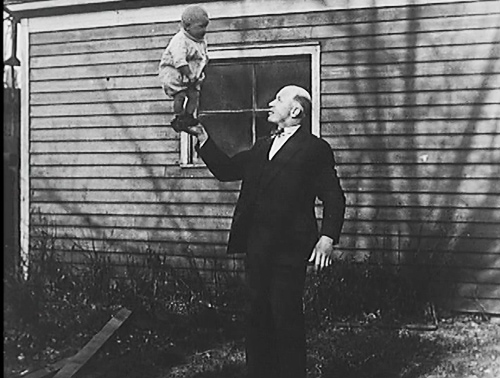
MOST ORIGINAL CONTRIBUTION TO FILM HISTORY
Orphans 7 – A Film Symposium (New York University’s Orphan Film Symposium, www.orphanfilmsymposium.blogspot.com)
For bringing to the attention of DVD watchers a rich and fascinating area of film history: so-called “ephemeral” films, including amateur films, activist filmmaking, industrial films, etc., Read more
From Cineaste (Spring 2010; Vol. XXXV, No. 2). Considering the continuing lack of contact between most Americans and the remainder of the world, it probably shouldn’t be too surprising to find James Wolcott still rattling on about the alleged French worship of Jerry Lewis in the September 2011 Vanity Fair — a myth addressed briefly in my second paragraph here, whose limited factual basis in fact hasn’t really been operative for almost half a century. As Lewis himself has often pointed out, his popularity in many places around the world has clearly surpassed his reputation in France. (Today, for instance, Woody Allen is immensely more popular there, with intellectuals as well as the general public — and more popular there than he has ever been in the U.S., which has never been true with Lewis.) But presumably this cherished piece of idiocy will continue to be trotted out as long as Americans remain clueless about France and its culture and proud of its ignorance. It’s a little bit like saying, “Oh, those naughty French — ooo-la-la!” — J.R.
Jerry Lewis
by Chris Fujiwara. Urbana/Chicago: University of Illinois Press,
162 pp., illus. Hardcover: $60.00. Paperback: $19.95.

I hope I can be forgiven for repeating an anecdote I recounted in these pages in 2004,while writing about Charlie Chaplin’s films on DVD. Read more
A lecture written circa fall 2002, I forget for which occasion. I’m not even sure if this represents a complete or final draft. This was written before the belated rediscovery of The Third Man in Vienna (not one of the better episodes in Around the World with Orson Welles, alas, and now available on DVD). — J.R.
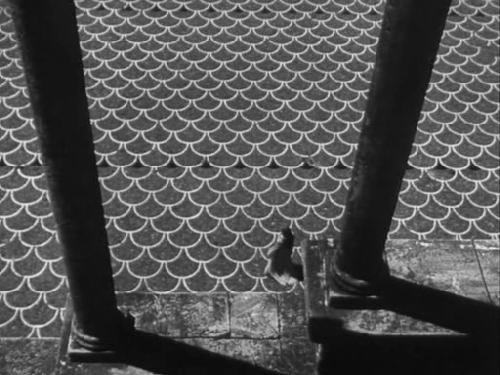


My point of departure for this paper is remarks that have been made by myself and others about Orson Welles’ three completed features of the 1950s —- Othello, Mr. Arkadin, and Touch of Evil—- and how these reflect his attitudes towards what was happening in the United States around the same time. More specifically, I’m thinking of my own speculation that Othello (1952) may have something to do with the Hollywood blacklist and witch hunts, and James Naremore’s observation that the character of Van Stratten (Robert Arden) in Mr. Arkadin (1955), “quite by accident, bears an uncanny resemblance to a young, athletic Richard Nixon,” relates to the Cold War (with Arkadin having been modeled to some degree on Josef Stalin and the character of Van Stratten suggesting Richard Nixon in certain respects).
Now I hasten to add that the conscious intentionality of Welles in relation to either of these relationships or many others like them probably fluctuates a good deal, and that this isn’t my only frame of reference. Read more
From the Chicago Reader (June 14, 1996). — J.R.

Films by Abbas Kiarostami
By Jonathan Rosenbaum
This month is an unusually rich one at the Film Center, especially for work that’s generally unavailable. Every Thursday there’s a classic film noir, with the rarely screened ultraminimalist Murder by Contract (1958) a particular highlight. Every Friday and Tuesday there are features by the late mannerist maestro Jean-Pierre Melville — an innovative director of French art movies (The Silence of the Sea, Les enfants terribles) who eventually became a specialist in American-style gangster films (Le doulos, Second Breath, Le samourai) and a homoerotic cult favorite of Quentin Tarantino and John Woo. (Catch Melville’s 1965 Second Breath this Friday and marvel at the bizarre sensibility and consummate craft that combine to lovingly duplicate the texture of a cheesy, nondescript Columbia Pictures noir of the 50s.) And best of all is a program devoted to Iranian master Abbas Kiarostami, including his four major features, over the next two weekends.
Both the Melville and the Kiarostami retrospectives are close to being complete. The missing Melville titles are 24 Hours in the Life of a Clown (his only short film, 1946), When You’ll Read This Letter (1953), and The Elder Ferchaux (1962), but no less than 11 features are showing this month. Read more
From the Chicago Reader (May 15, 1992). — J.R.
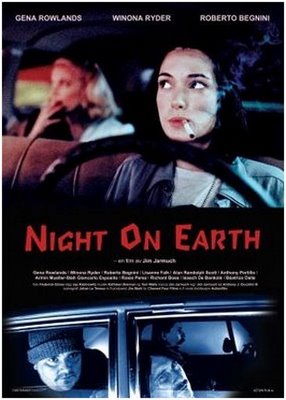
NIGHT ON EARTH
** (Worth seeing)
Directed and written by Jim Jarmusch
With Winona Ryder, Gena Rowlands, Giancarlo Esposito, Armin Mueller-Stahl, Rosie Perez, Isaach de Bankolé, Beatrice Dalle, Roberto Benigni, and Matti Pellonpaa.
As the most popular American independent filmmaker around, Jim Jarmusch carries a special burden: his reputation makes his work particularly hard to evaluate. Other American independents who haven’t enjoyed his commercial success — he’s the only independent who comes to mind who works mainly in 35-millimeter and owns all his own pictures — envy and even resent him, questioning whether he offers a serious alternative to the commercial mainstream. Indeed, Jarmusch has come to be so identified with artistic freedom that it’s difficult to see how any of his movies can live up to his reputation.
“Jim Jarmusch’s planet is the Lower East Side,” began Karen Schoemer in an awestruck feature in the New York Times late last month. “Its bars, its bodegas and its pavement make up his home, his office and his hangout.” “The director finds drama in the ordinary” reads a pull quote in the following hagiography, and clearly so does the Times: it finds a special magic and potency in a run-down neighborhood simply because Jarmusch lives there. Read more
From the Chicago Reader (April 26, 2002). — J.R.
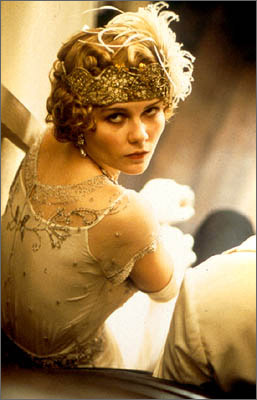
The Cat’s Meow
*** (A must-see)
Directed by Peter Bogdanovich
Written by Steven Peros
With Kirsten Dunst, Cary Elwes, Edward Herrmann, Eddie Izzard, Joanna Lumley, Jennifer Tilly, Victor Slezak, James Laurenson, and Claudia Harrison.

ORSON WELLES: In the original script [of Citizen Kane] we had a scene based on a notorious thing Hearst had done, which I still cannot repeat for publication. And I cut it out because I thought it hurt the film and wasn’t in keeping with Kane’s character. If I’d kept it in, I would have had no trouble with Hearst. He wouldn’t have dared admit it was him.
PETER BOGDANOVICH: Did you shoot the scene?
ORSON WELLES: No, I didn’t. I decided against it. If I’d kept it in, I would have bought silence for myself forever. — This Is Orson Welles
I edited This Is Orson Welles, a series of interviews Peter Bogdanovich did with Welles, at the request not of Bogdanovich but of Oja Kodar, Welles’s companion and collaborator for the last 20-odd years of his life, to whom Welles had willed the rights. The incident Welles alluded to in this exchange is the subject of The Cat’s Meow, directed by Bogdanovich and adapted by Steven Peros from his own play. Read more
From the Chicago Reader (February 28, 1997). — J.R.
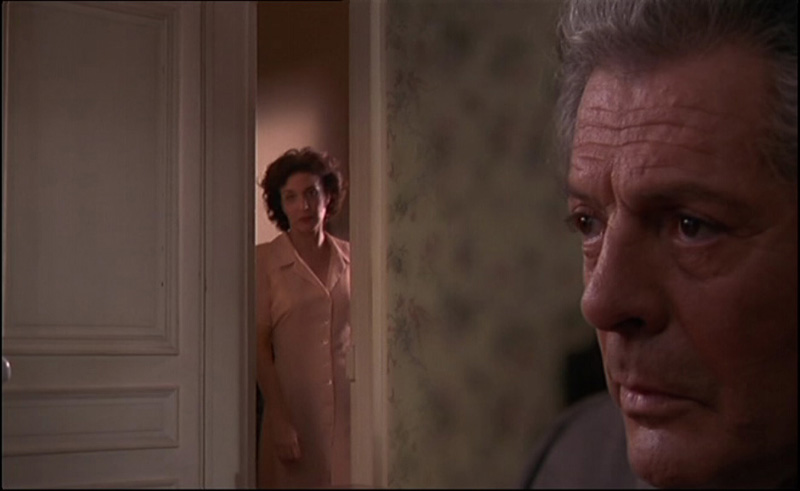
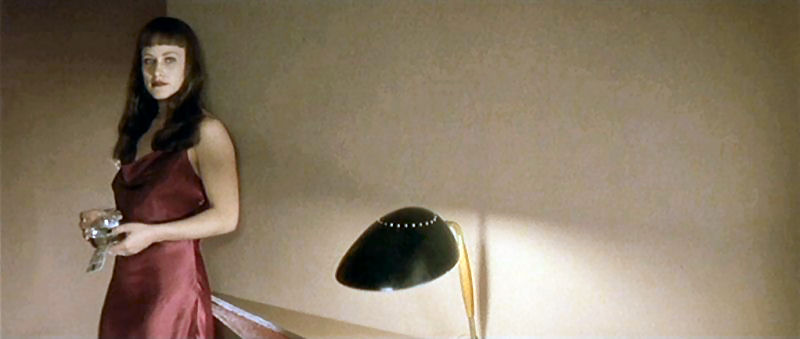
Three Lives and Only One Death
Rating *** A must see
Directed by Raul Ruiz
Written by Ruiz and Pascal Bonitzer
With Marcello Mastroianni, Anna Galiena, Marisa Paredes, Melvil Poupaud, Chiara Mastroianni, Arielle Dombasle, Feodor Atkine, and Lou Castel.
Lost Highway
Rating *** A must see
Directed by David Lynch
Written by Lynch and Barry Gifford
With Bill Pullman, Patricia Arquette, Balthazar Getty, Michael Massee, Robert Blake, Gary Busey, Lucy Butler, Robert Loggia, and Richard Pryor.

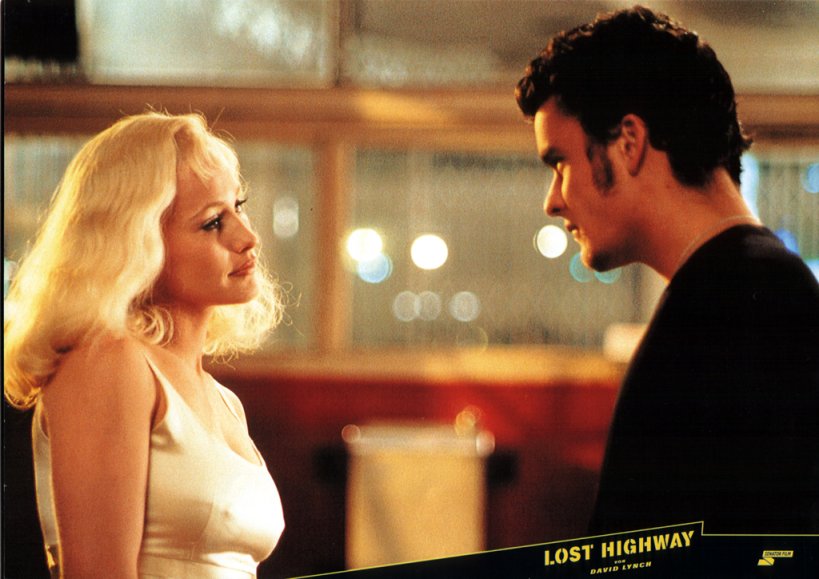
By coincidence, two major features by two of the most talented postsurrealist filmmakers open this week, both convoluted parables about heroes with multiple identities. Though Raul Ruiz and David Lynch are separated by a world of differences — political, cultural, national, intellectual, and temperamental — both are expanding the options in filmmaking as well as filmgoing. Each offers a different kind of roller-coaster ride that manages to be bewildering, provocative, kaleidoscopic, scary, visually intoxicating, and funny.
Ruiz — a Chilean who moved to Paris in 1974 and who makes movies all over the world (in France, Italy, Taiwan, and the U.S. in the past year alone) — has made 90-odd films and videos to date, though he’s only five years older than Lynch. Read more
From the January 1973 issue of the short-lived Saturday Review of the Arts. — J.R.
Henri Langlois’s latest creation, the Cinema Museum in Paris, finally opened last summer, a year and a half behind schedule. Only a few of the exhibits were labeled, and five months later the long-awaited catalogue of the exposition has not yet appeared. But even in its present state, the Cinémathèque Française is already the most influential film archive in the world.

Langlois’s “Seventy-five Years of Word Cinema” occupies sixty rooms in the curving promenade of the Palais de Chaillot, directrly across the Seine from the Eiffel Tower; the present exhibit represents less than one-tenth of the Cinémathèque’s collection of movie memorabilia. From the beginning, the Turkish-born film historian has tried to save everything: to impose selective criteria, he believes,is to anticipate the critical standards of the future. If the result is a cross between a crowded attic and a carnival funhouse, with all its calculated effects, this approach also permitted such young critics as Jean-Luc Godard, Jacques Rivette, and François Truffaut in the 1950s to take crash courses in every kind of cinema before making their own movies.
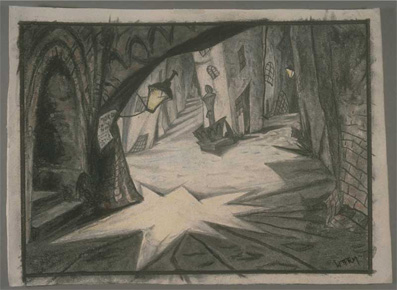
The vision of the Cinémathèque’s founder encompasses both Marilyn Monroe and Eisenstein; stray souvenirs and essential artifacts are given equal prominence. Read more
From the Chicago Reader (September 1, 1998). — J.R.
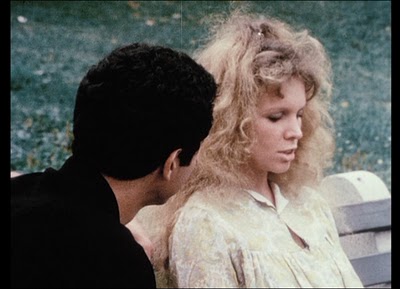
Seeing this singular 1968 American experimental feature by William Greaves a second time (on video; the first time was in 1981, in its original 35-millimeter format) has led me to value it more, though arguably the fact that it loses relatively little impact on video constitutes one of its limitations. Greaves, a pioneering black actor whose career stretches back to postwar films made for black audiences as well as the underrated Hollywood feature Lost Boundaries, went on to direct over 200 documentaries, host and executive produce NET’s Black Journal, and teach acting at the Lee Strasberg Theatre Institute. For this eccentric venture, he got two white actors to play a quarreling couple in Central Park and proceeded to film not only them (in both rehearsal and performance) but also himself and his camera crew and various other people in the vicinity, often juxtaposing two or three camera angles simultaneously in split screen in the final edit. The crew’s own doubts and speculations about the film being made were also recorded later and edited into the mix. The couple’s quarrel is vitriolic and singularly unpleasant, the acting variable, the collective insight into what Greaves is up to mainly uncertain. Read more
From the Chicago Reader (February 21, 1997). — J.R.

Can Dialectics Break Bricks?
Rating ** Worth seeing
Directed by Rene Vienet (and Doo Kwang Kee)
Written by Vienet (and Ngai Hong)
With Pai Paiu, Chan Hung Liu, Ingrid Wu, and the voices of Jacques Thebaut, Patrick Dewaere, Michelle Grellier, and Dominique Morin.
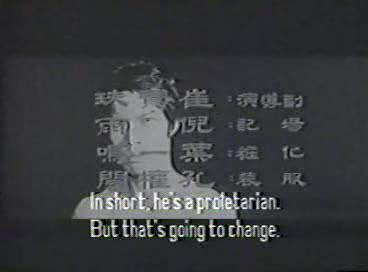
“This is a situationist film. This is not a situationist film,” begin Keith Sanborn’s notes to Rene Vienet’s Can Dialectics Break Bricks? — a French film in color being shown at Chicago Filmmakers this Saturday in a subtitled, black-and-white, letterboxed video version. I think Sanborn, an experimental filmmaker, is referring to the fact that Vienet’s film was made in 1973, the year after the Situationist International disbanded and two years after Vienet — who joined the situationists in 1963 — resigned from their ranks.
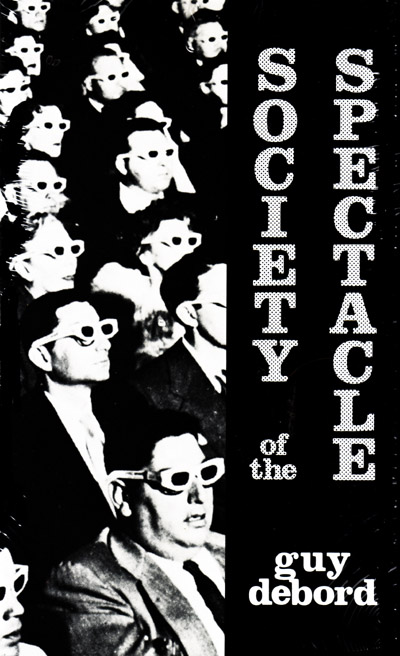
I don’t know much about the situationists, but according to critic Peter Wollen they formed out of a split within an earlier radical artistic and political group, the lettrists, who sort of took over the mantle of the French avant-garde from the surrealists after World War II under the leadership of Isidore Isou. The “dissident Revolutionary Lettrists,” as Wollen called them, were led by two young filmmakers, Guy Debord and Gil Wolman, who went on to become situationists. Read more














